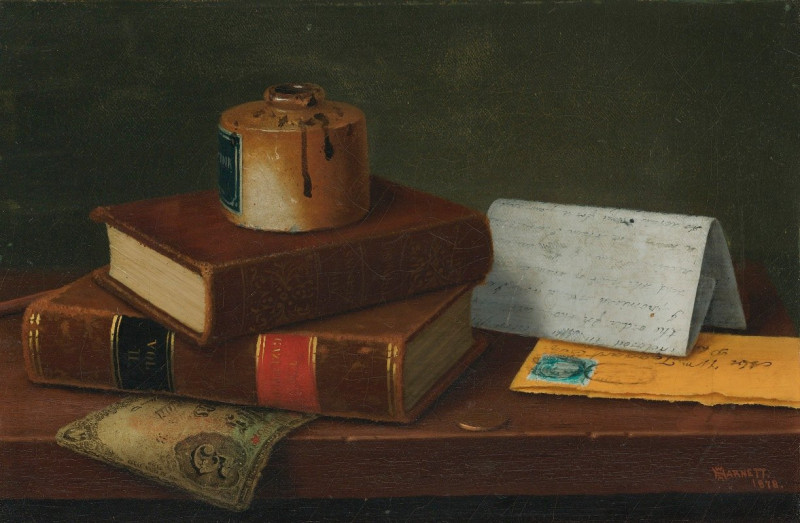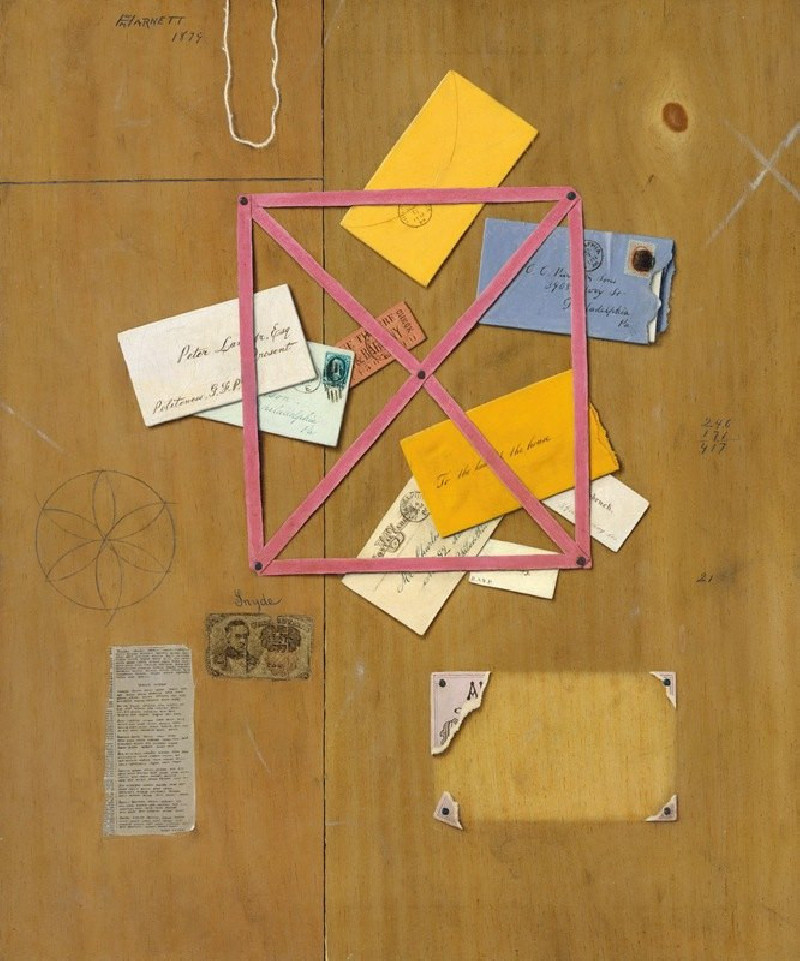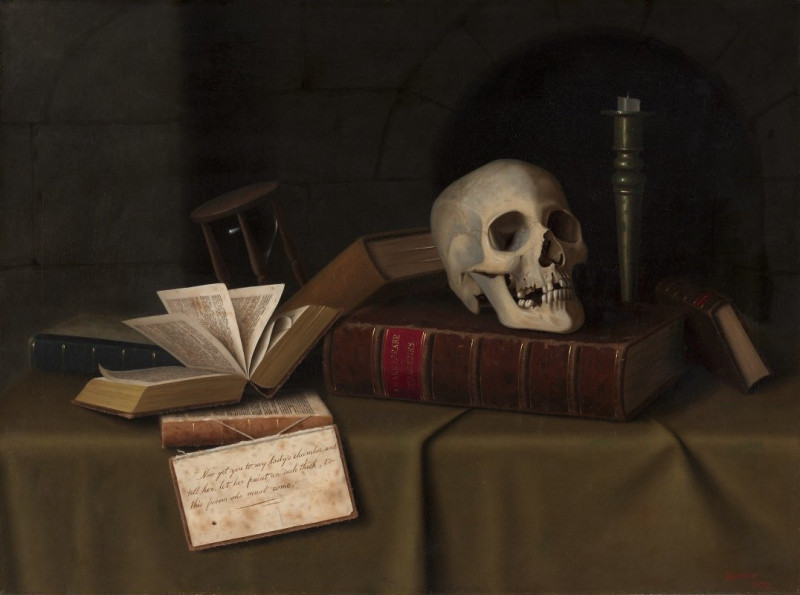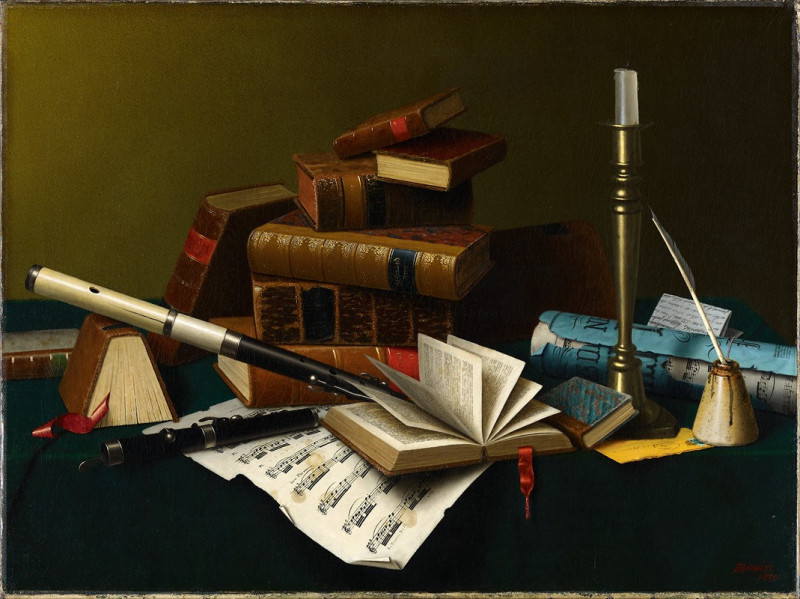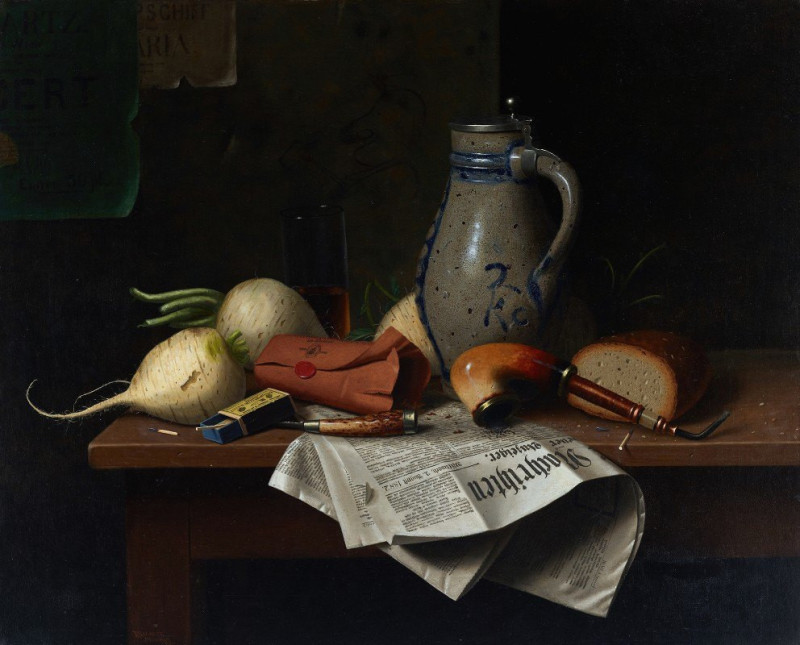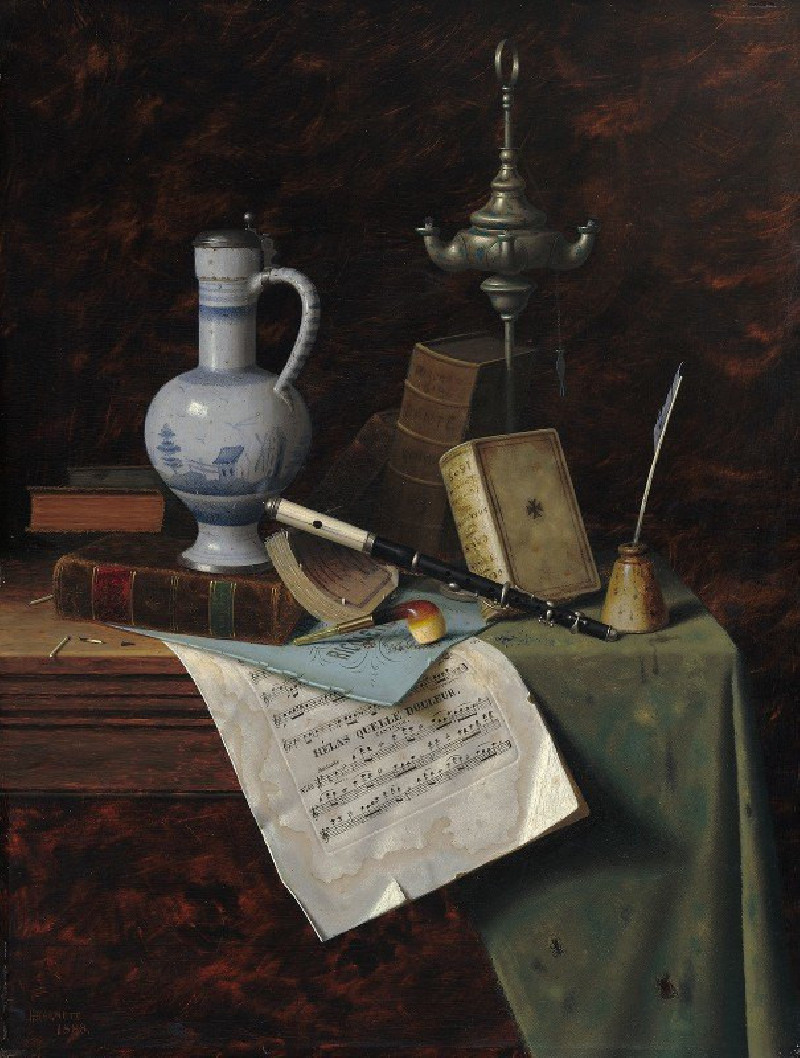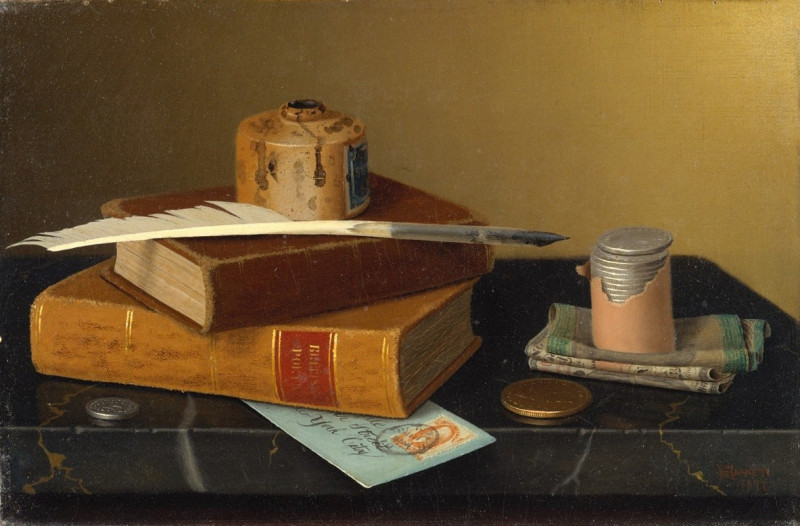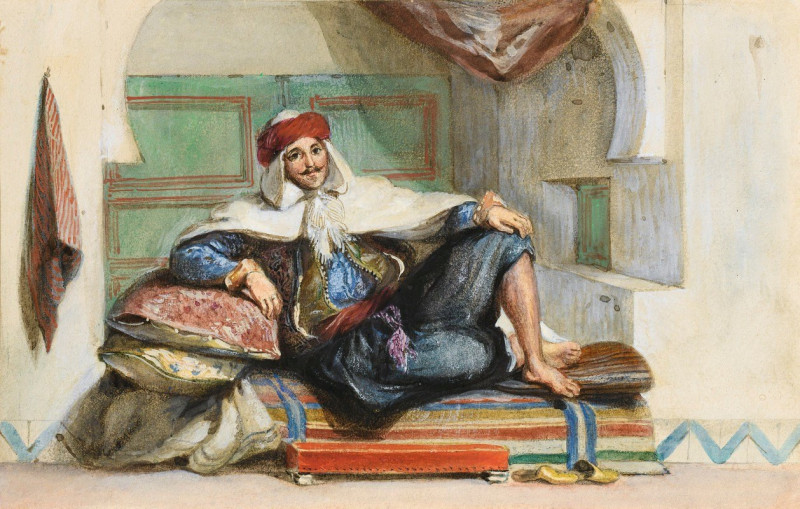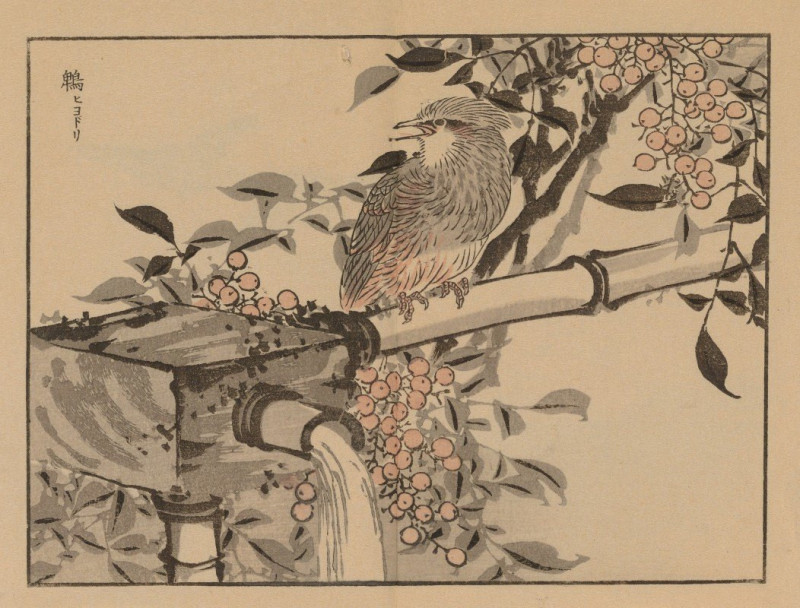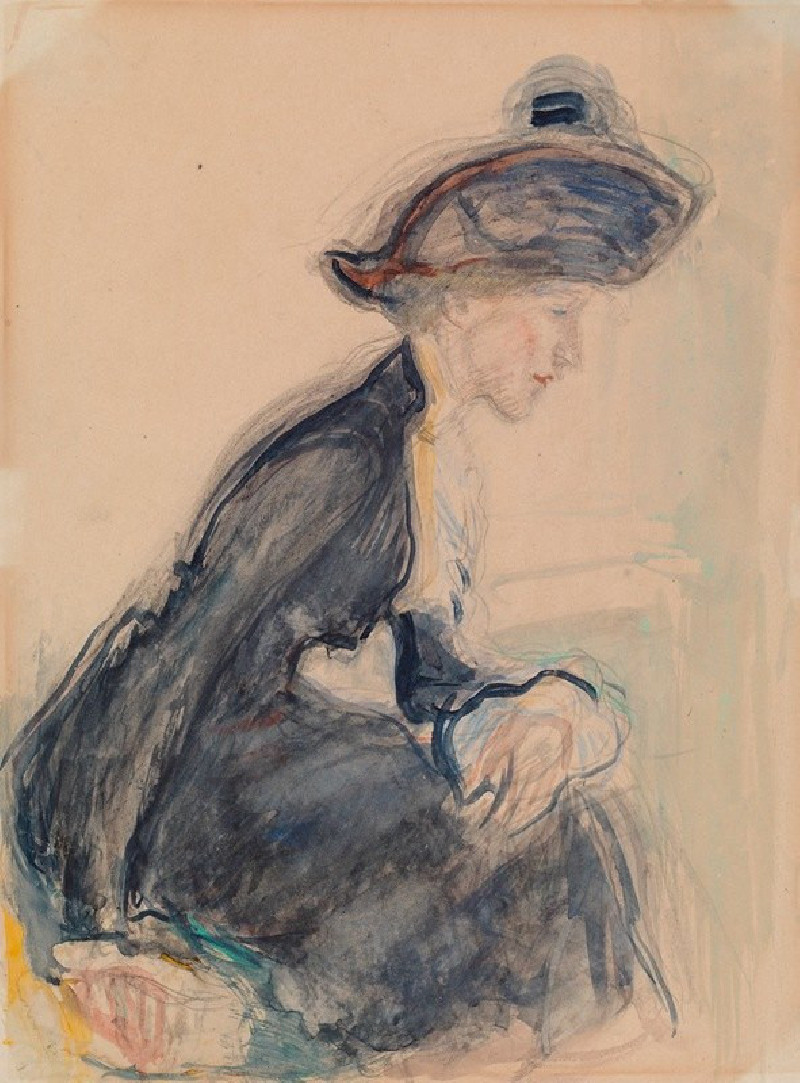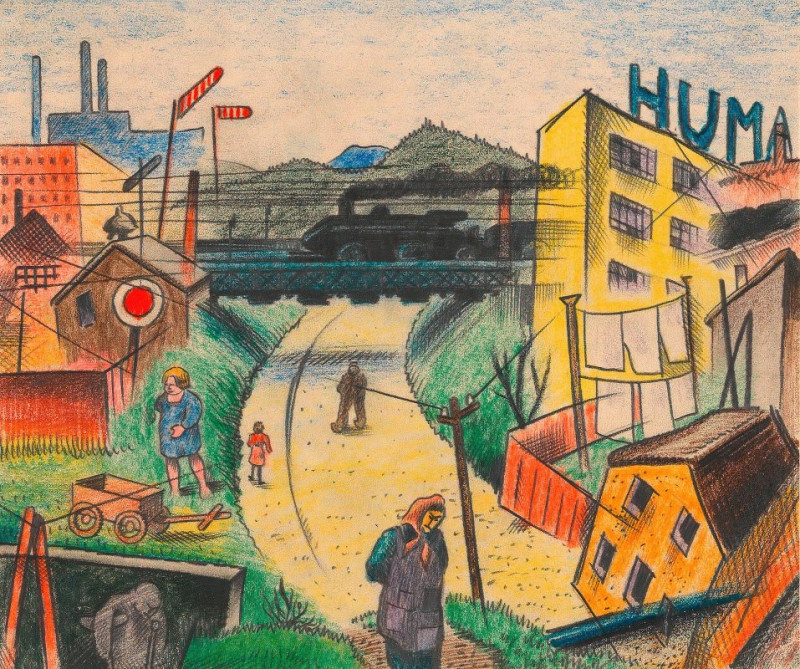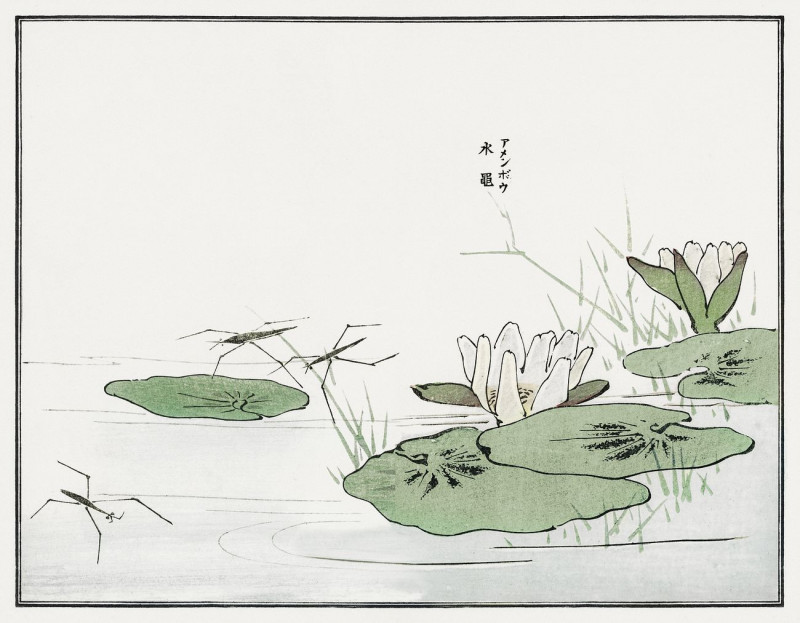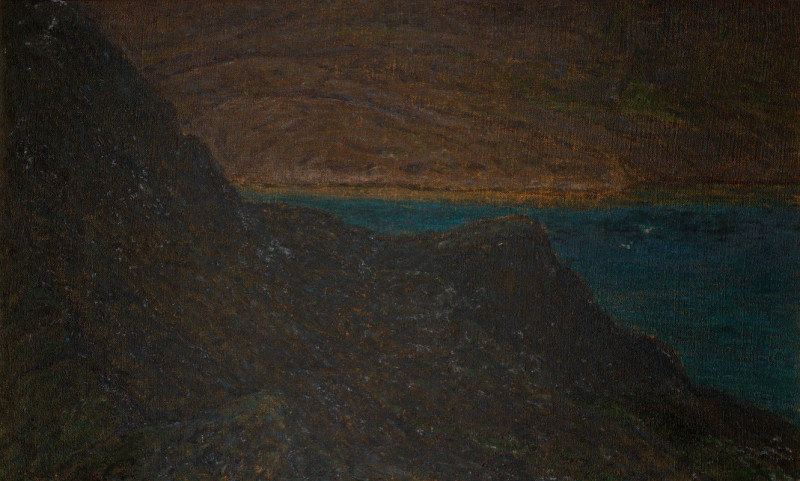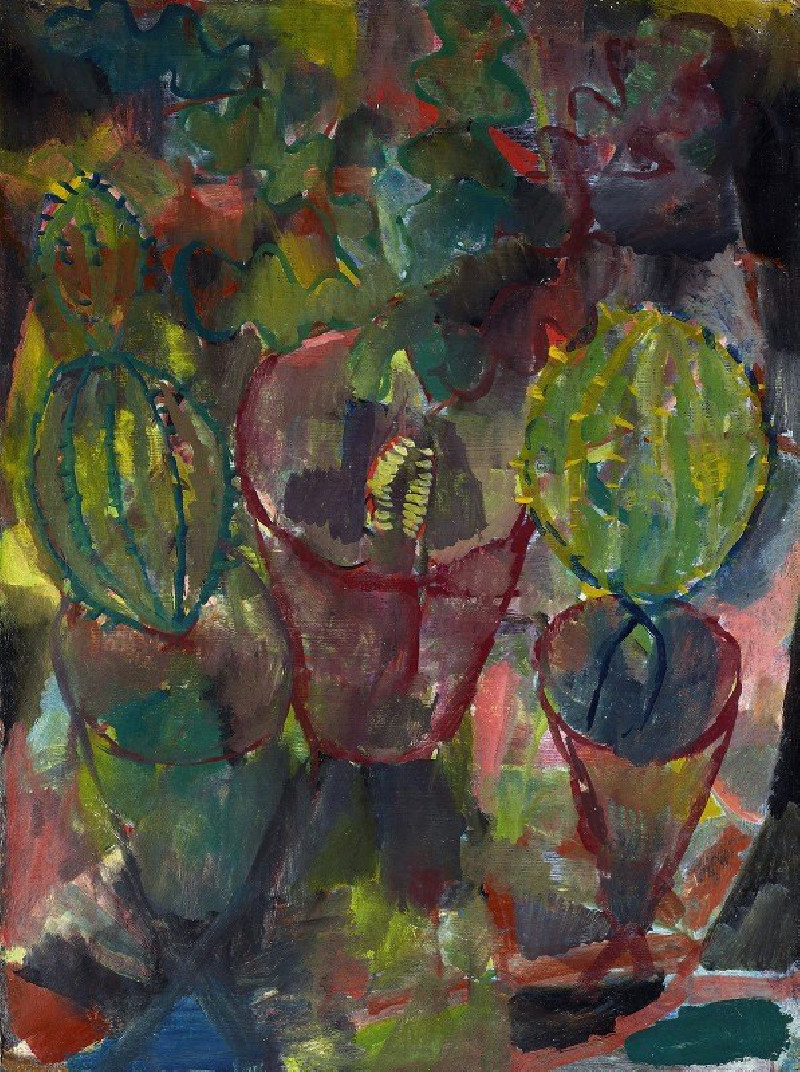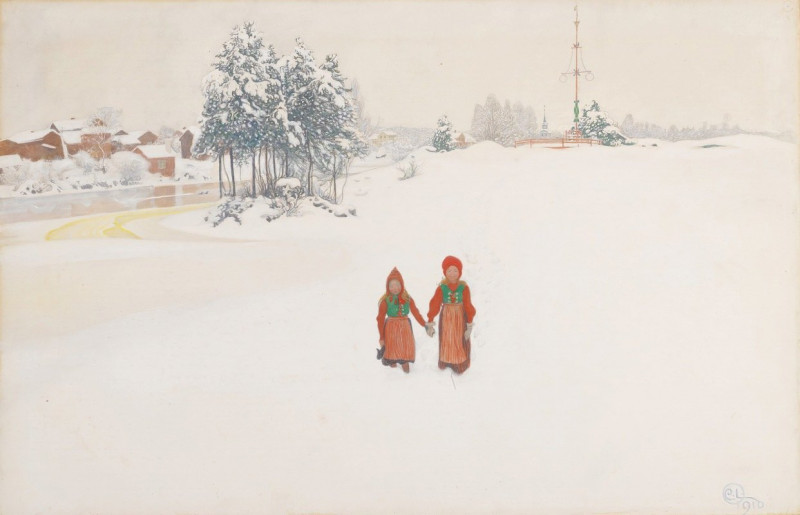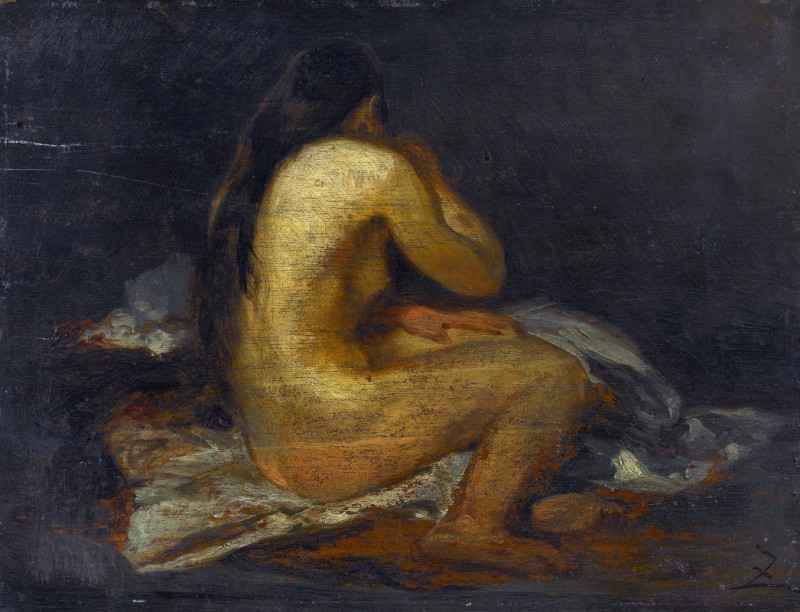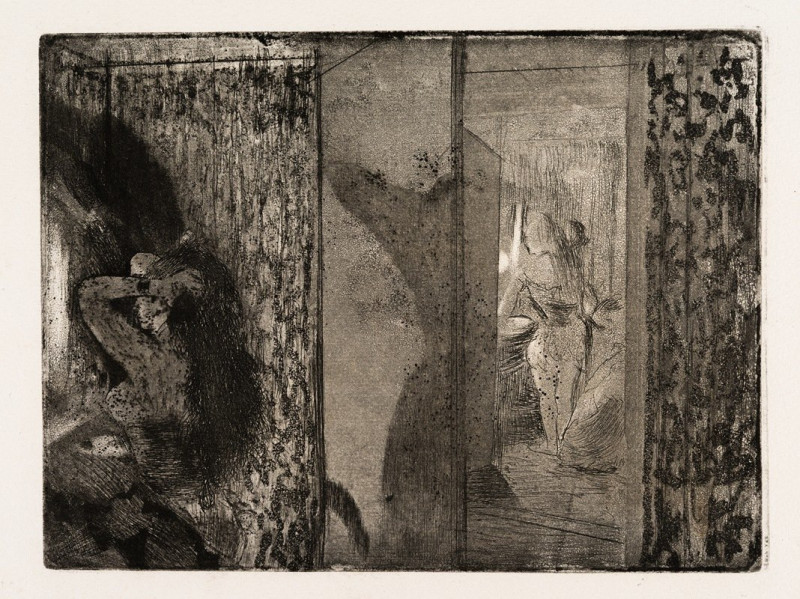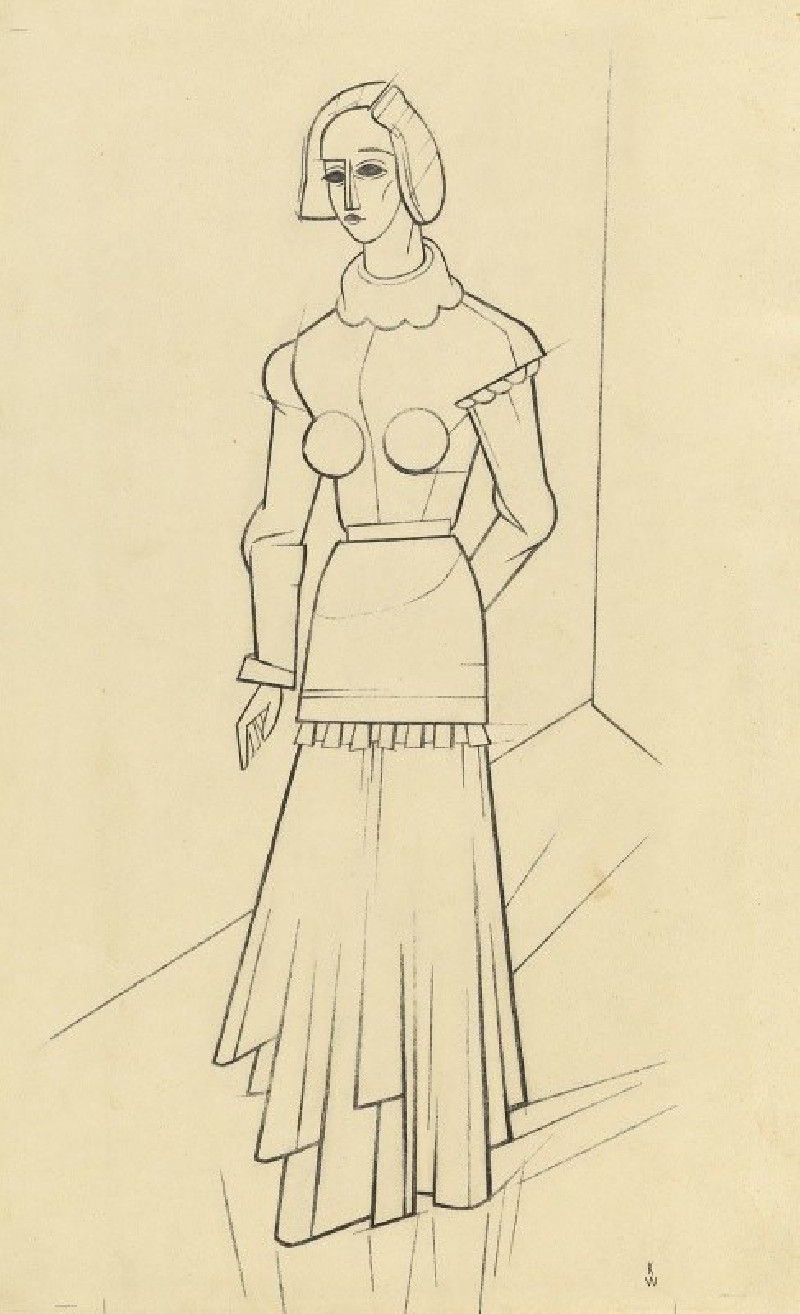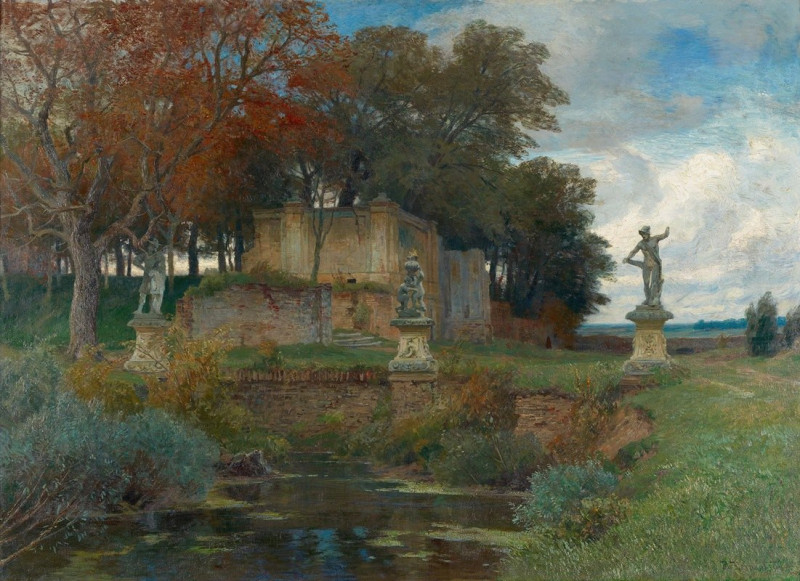Plucked Clean (1882)
Technique: Giclée quality print
Recommended by our customers
More about this artwork
"Plucked Clean" is an evocative and vivid painting by the celebrated American artist William Michael Harnett, dated 1882. Renowned for his trompe-l'œil style—French for "deceive the eye"—Harnett showcases his keen attention to detail and remarkable ability to render subjects with lifelike precision.The artwork features a fowl, upside-down with its feet tied together by a string, hanging against what appears to be a dark wooden door. It has been plucked, leaving its skin bare and spotted with remnants of feathers. The most striking details are perhaps the splashes of white feathers still clinging to its skin, and even more so the few loose feathers drifting down toward the ground.Harnett's depiction of texture and realism is on full display—each feather, wrinkle, and speck of dirt is reproduced with meticulous care. The somber backdrop of dark wood accentuates the stark and slightly unsettling subject of the dead, plucked bird, providing a poignant contrast that involves viewers emotionally, prompting them to reflect on themes of life and transience.
Delivery
Returns
William Michael Harnett was an Irish-American painter known for his trompe-l'œil still lifes of ordinary subjects.
Harnett was born in Clonakilty, County Cork, Ireland during the Potato Famine. Shortly after his birth, his family emigrated to America and settled in Philadelphia. in 1868 after becoming a citizen of the United States, the boy earned a living by engraving designs on table silver, and also attended night classes at the Pennsylvania Academy of the Arts, and later at Cooper Union and National University in New York. His first known oil painting, a still life, dates from 1874.


